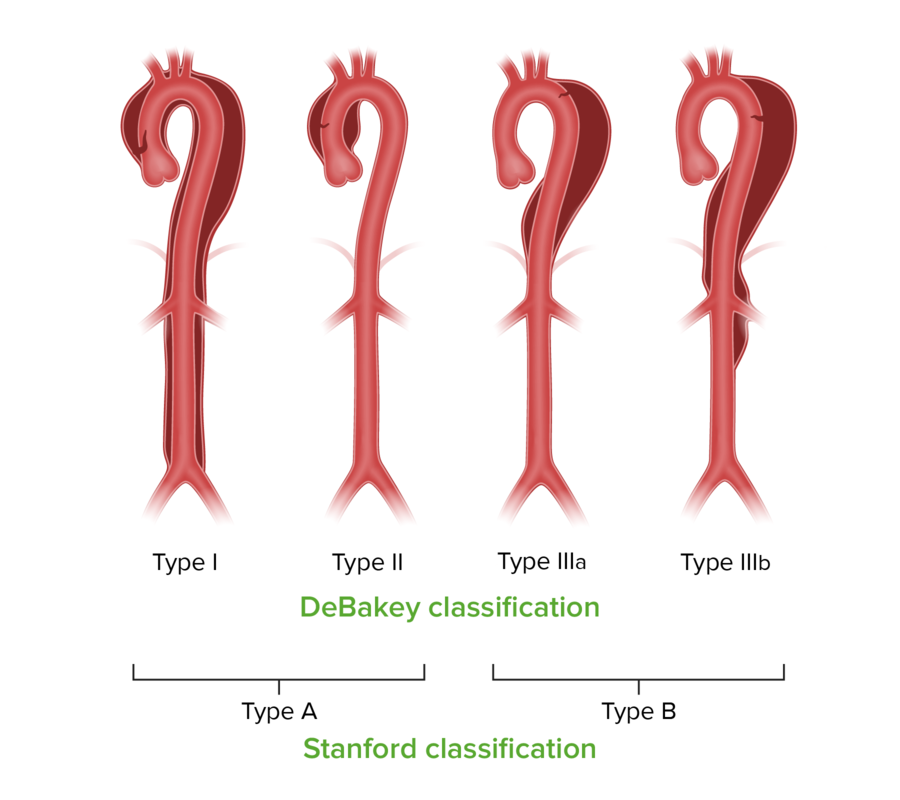Playlist
Show Playlist
Hide Playlist
Dissection of the Aorta: Etiology
-
Slides 05 VascularMedicine advanced.pdf
-
Reference List Vascular Medicine.pdf
-
Download Lecture Overview
00:01 Hello. This is advanced vascular medicine. This segment, we'll continue the discussion of arterial diseases. We're going to concentrate, in this section, on further information on dissection of the aorta. And we're also going to talk about renal artery stenosis and fibromuscular dysplasia, which cause abnormalities in renal blood flow and can lead to severe hypertension, which is the topic for our next talk. So let's talk a little bit about dissection of the aorta. I mentioned it in the last talk, when I was discussing aneurysms. But remember: An aneurysm—a true aneurysm—is a dilation and a thinning of the wall of and that… an artery, and eventually, this can lead to rupture. In dissection, that's not the case. 00:54 What happens in dissection is that there's an actual tear in the inner lining of the heart, allowing the blood and the full blood pressure to gain access to the internal components of the wall of the blood vessel and to dissect down it. And eventually, sometimes, these will rupture through the adventitia and cause hemorrhage, which can be fatal. 01:20 These conditions—dissections—are caused by a weakened area of elastic and smooth muscle layer tissue in the blood vessel. And again, dissections most commonly occur in the aorta. 01:34 The most common age group is the 40- to 60-year-old age group. You can see—in this photomicrograph that is taken from a section put under the microscope—you can actually see the rupture, or the tear, in the inner lining—the intima—of this artery. 01:53 Now, a number… There are a number of risk factors related to the development of dissection. 02:03 Congenital defects I mentioned in the last lecture, such as bicuspid aortic valve or coarctation of the aorta, are associated with abnormal aortic structure that can lead to a dissection. Marfan's syndrome is another entity where there's abnormal aortic structure weakening in the wall that can allow for a tear to occur and dissection to develop. Hypertension is very commonly associated with aorta dissection—no surprise, because it puts additional stress on the aortic wall and can be a factor in… that leads to the tear in the wall and the subsequent dissection. Connective tissue diseases such as lupus or rheumatoid arthritis or other diseases… autoimmune diseases can also weaken the blood vessel wall and lead to dissection. Pregnancy, because of the release of relaxing factor in pregnant women, actually can also weaken the wall. And particularly, if there's a family tendency to aneurysms, dissection can occur during pregnancy. And that's a really nasty situation, because it needs urgent cardiac surgery, and of course, you want to do that without hurting the fetus if possible. And then finally, the most common cause is aging degeneration of the medial layer of the vessel wall with weakening. And of course, atherosclerosis often is a factor involved in this degenerative change in the vessel wall.
About the Lecture
The lecture Dissection of the Aorta: Etiology by Joseph Alpert, MD is from the course Arterial Diseases.
Included Quiz Questions
Which of the following is a risk factor for dissection of the aorta?
- Hypertension.
- Esophageal spams.
- Recurrent pneumonia.
- Peptic ulcers.
Dissection most commonly occurs in which of the following blood vessels?
- Aorta.
- Pulmonary vein.
- Pulmonary artery.
- Inferior vena cava.
- Superior vena cava.
Customer reviews
5,0 of 5 stars
| 5 Stars |
|
5 |
| 4 Stars |
|
0 |
| 3 Stars |
|
0 |
| 2 Stars |
|
0 |
| 1 Star |
|
0 |




